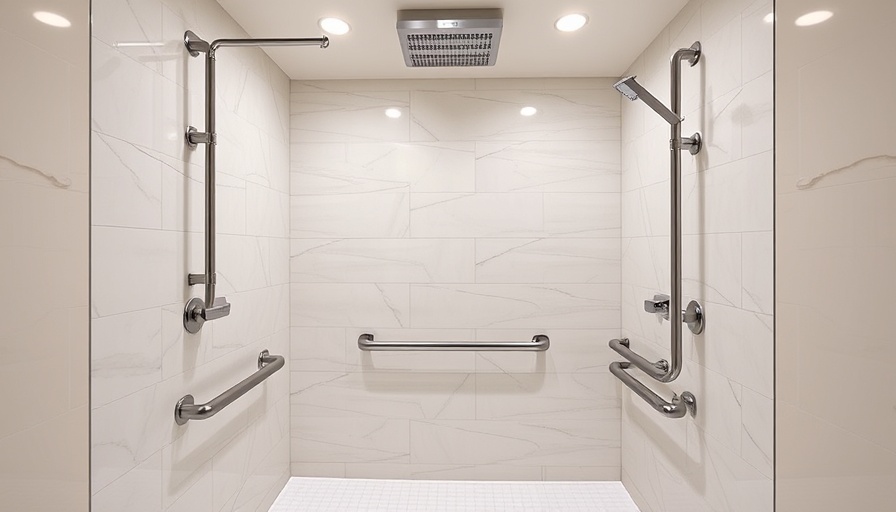
Understanding ADA Regulations for Showers: An Essential Overview
The regulations surrounding ADA (Americans with Disabilities Act) shower sizes are not just bureaucratic layers; they represent a commitment to accessibility that significantly impacts individuals with disabilities. In Ocean County, the importance of adhering to ADA regulations is greatly magnified, given the area's continuous focus on improving accessibility to public and private spaces. For homeowners, builders, and facility managers, understanding these regulations is not just a legal obligation but an ethical imperative.
The ADA shower size standards are part of a broader initiative aimed at ensuring that every individual, regardless of physical ability, has the ability to navigate and use facilities with dignity and comfort. The carve-out for showers indicates that they must be designed to accommodate various users, specifically wheelchair users and those using mobility aids. According to the ADA Standards for Accessible Design, the minimum shower size must be 30 inches by 60 inches to guarantee sufficient maneuverability and safety.
Key Dimensions and Features of ADA-Compliant Showers
Designing a shower that meets ADA standards goes beyond simply adhering to dimensions. While the 30-inch by 60-inch framework serves as a baseline, including various features significantly enhances accessibility. For instance, the shower floor must slope adequately for effective drainage without compromising safety. A flat floor can create a slip hazard, thereby defeating the purpose of accessibility.
The height of fixtures is also a crucial consideration. Handheld showerheads and controls must be operable with one hand, not requiring tight grasping or twisting. Installing controls between 15-48 inches off the ground ensures that users of varying abilities and heights can comfortably operate the shower.
The Importance of Additional Features for Accessibility
In addition to meeting the size requirements, adding features like grab bars, non-slip flooring, and fold-down shower seats can vastly improve safety and usability for individuals using mobility aids. Grab bars must be installed securely to withstand significant weight. The fold-down seat is particularly advantageous, providing users the option to sit while showering. This feature becomes invaluable for caregivers and users alike, removing unnecessary strain during these daily routines.
Common Mistakes to Avoid in ADA Shower Design
Despite the straightforward nature of the regulations, people often make crucial mistakes that can jeopardize accessibility. For example, neglecting the turning radius requirements for wheelchair users can lead to frustrating and dangerous situations. The ADA specifies that there should be a minimum turning space of 60 inches in diameter, and failing to incorporate this into the design can limit movement greatly.
Another common error is the improper installation of grab bars. These crucial aids help prevent falls, but if placed incorrectly or inadequately secured, they can do more harm than good. Therefore, it's crucial to follow guidelines meticulously while considering the needs of the specific users.
Future Predictions: Accessibility in Home Design
The trend toward increased accessibility in home design is only set to grow as our population ages and more people experience disabilities. In Ocean County, we can expect that increased advocacy for improved accessibility will lead to smarter, safer designs in residential and commercial buildings alike. Understanding these changes is crucial for anyone engaged in home modifications, whether they are the homeowners or the builders involved in these projects.
Making Informed Decisions: Your Role in Accessibility
As a homeowner, builder, or facility manager, being well-informed about ADA regulations empowers you to create spaces that are welcoming to all individuals. Educating yourself about the necessary dimensions, features, and common mistakes can enhance user safety and convenience. Moreover, understanding these regulations enhances your reputation as a responsible and conscientious contractor or homeowner.
In summary, embracing ADA shower size regulations not only complies with legal mandates but also acknowledges the right to dignity and access for all individuals. Let's make spaces that everyone can enjoy!
Take Action Today
Join the movement towards improved accessibility by visiting your local regulatory office or engaging with community action groups focused on these issues. Understanding and acting on ADA shower regulations can create inclusive environments that uplift everyone, particularly those with disabilities.
 Add Row
Add Row  Add
Add 




 Add Row
Add Row  Add
Add 

Write A Comment